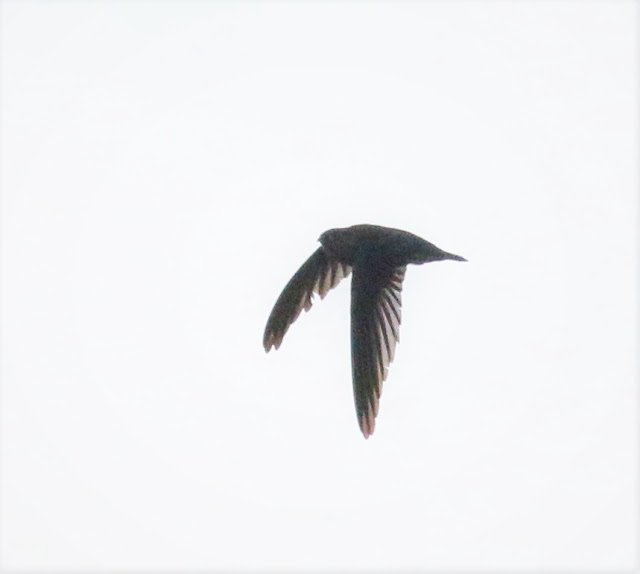While looking for birds, i stumble upon this lizard which looks a bit like a baby dino. This is one reptile which would certainly make 'cicak man' proud because it may one day be described as one of those species of lizard which can only be found in Peninsular Malaysia. According to a review from Denzer et. al (2015) they believe that the species found in the highlands of Peninsular Malaysia is different than other recognised species in the genus Gonocephalus. Based on chromosomal (i.e karyotyping) and molecular (i.e molecular phylogenetics using 16SrRNA sequencing) investigations, Denzer et. al (2015) have named the "new" genus as "Malayodracon robinsonii" !
However like all results from natural sciences, this finding is subject to comments and critique. Raymond T Hoser (2016) in the Australasian Journal of Herpetology (1 August 2016), had refuted the above findings not so much on its methodology but more on ethical issues. Using the International Code of Zoological Nomenclature which governed via the rules of homonym and priority, Hoser (2016) argues that Hoser (2014b) had earlier named this lizard as "Daraminagama robinsonii".
Whatever their differences are, what is more important here is that both researchers have probably found a new agamid genus! While we wait for further clarification, let us enjoy the beauty of this little dino.
Whatever their differences are, what is more important here is that both researchers have probably found a new agamid genus! While we wait for further clarification, let us enjoy the beauty of this little dino.
Appearing just like a scene from a Hollywood movie !
At first i saw some movements inside a bush near a hill slope at about 1,628 m asl. Thinking that it may just be a flowerpecker, i did not pay much attention to it until i saw its head. Instead of moving away from me, it inches slowly towards my direction knowing very well of my presence. Your common house lizard would probably run away upon seeing humans but not this one.
Science has described this lizard as an arboreal mountainous form of agamid lizard. From the above photo, you can clearly see its extended dewlap or some literature has described it as a large gular sac. This extended dewlap / gular sac is actually an extended skin that hangs beneath the lower jaw/neck and it is reported to functioned as territorial markers and for males to attract females.
It stopped at a tree just right in front of me.
The following are its morphological description:
The following are its morphological description:
* body triangular in cross-section
* no pataqia
* head is large, elongated and pointed
* bony protuberances on the occipital region
* sharp canthus rostralis and rounded superciliary edge
* tympanum exposed
* antehumeral fold presence
* transverse gular fold absent
* large gular sac
* nuchal and dorsal crest continous
* no preanal or femoral pore
source: www.reptile-base.org
Some people has described this lizard as having a beastly appearance but it was actually as accommodating as your domestic cat. In fact it was so accommodating that you can take its photos with any handphones available in the market. This docile character will makes it potentially vulnerable to poachers and collectors alike. I could have brought it back home but i believe it belongs more to the wild.
I think some days one of my photos might just appear inside this bright yellow square !
ENJOY YOUR ADVENTURES !






















































